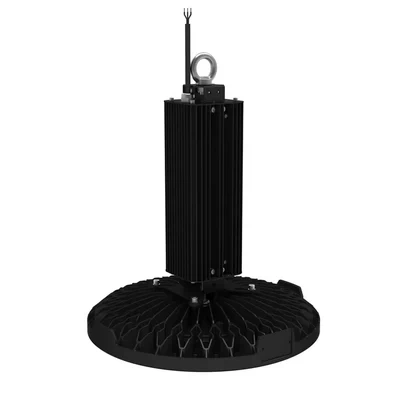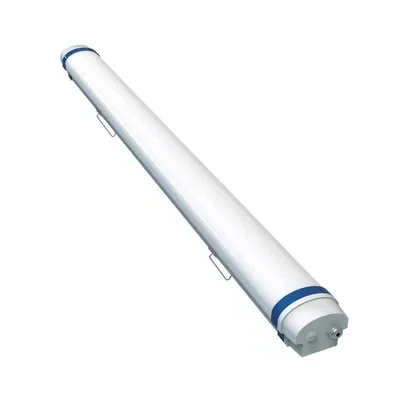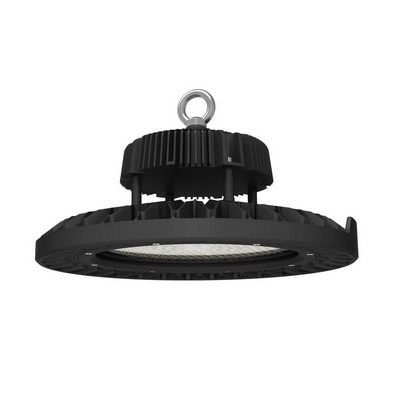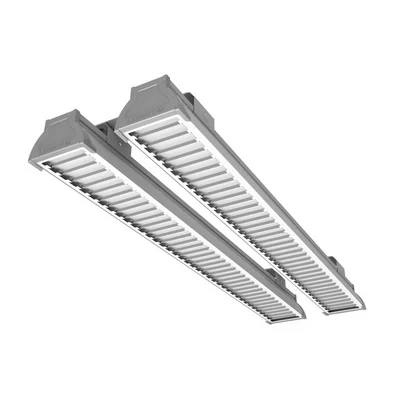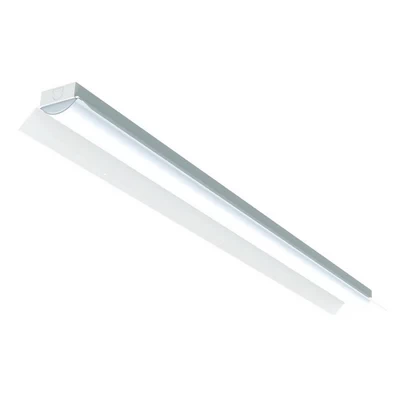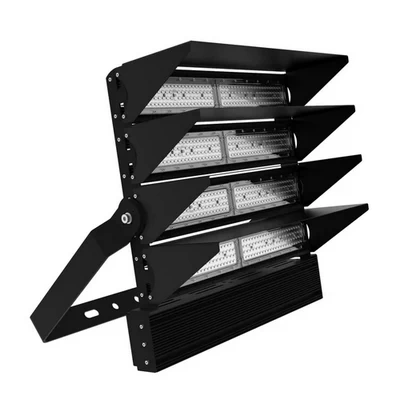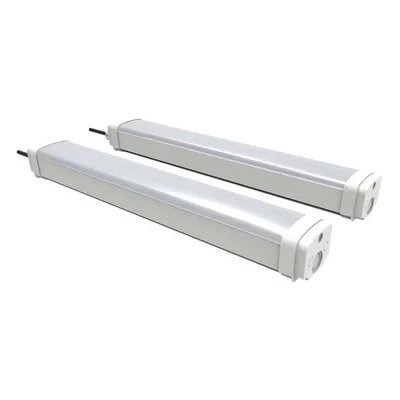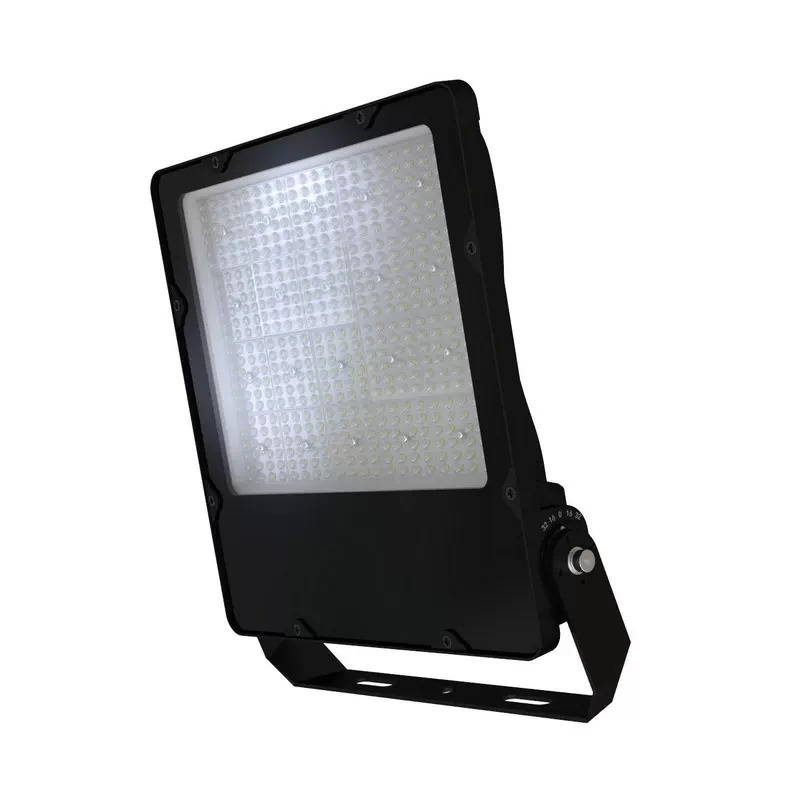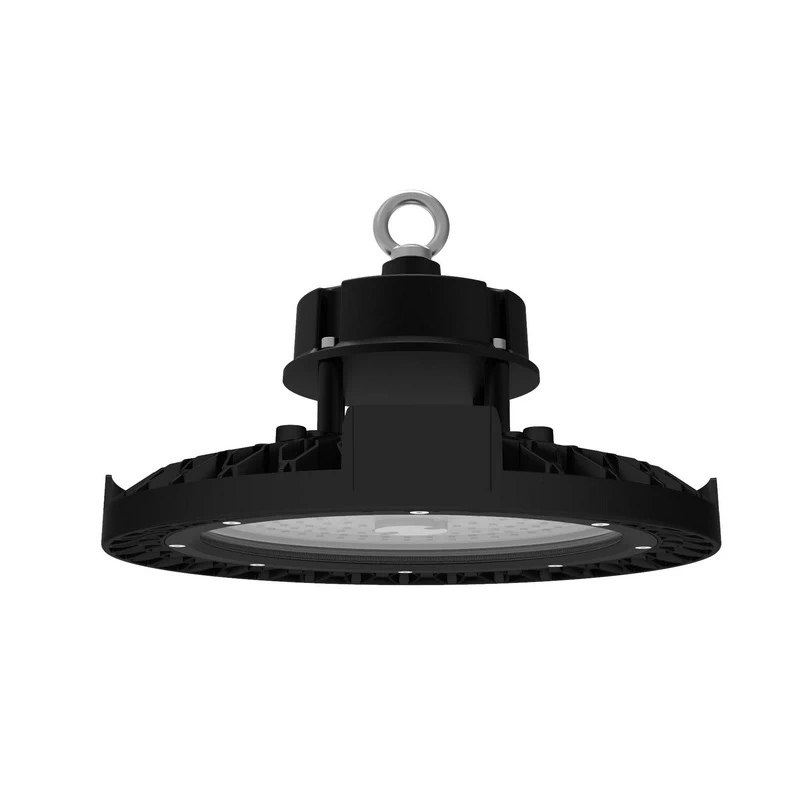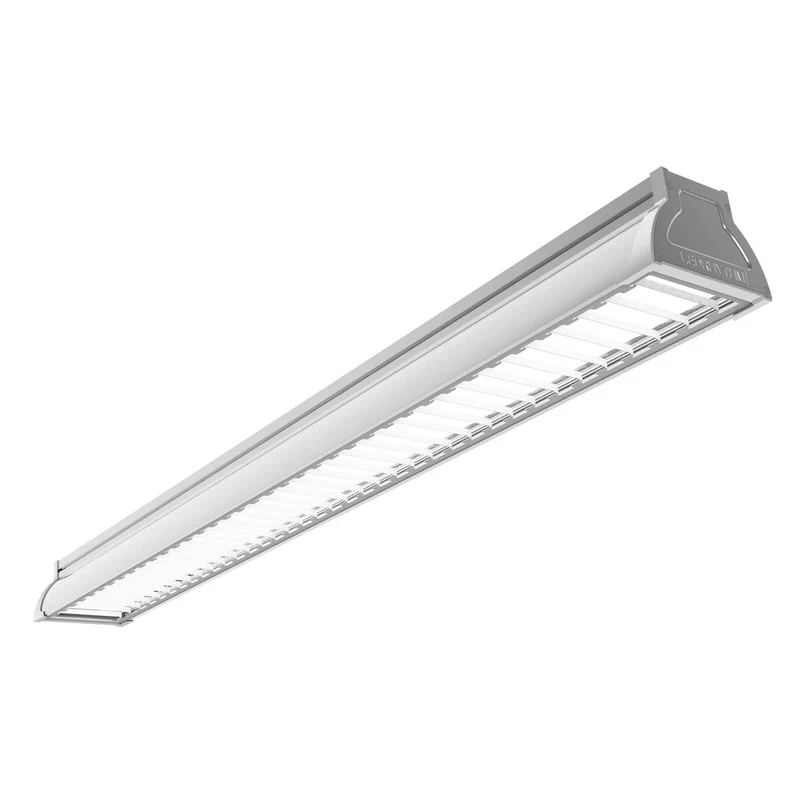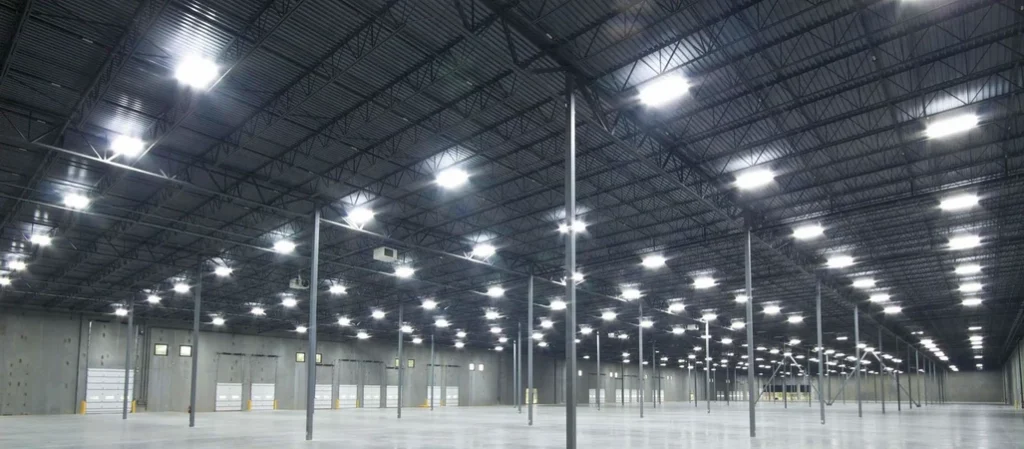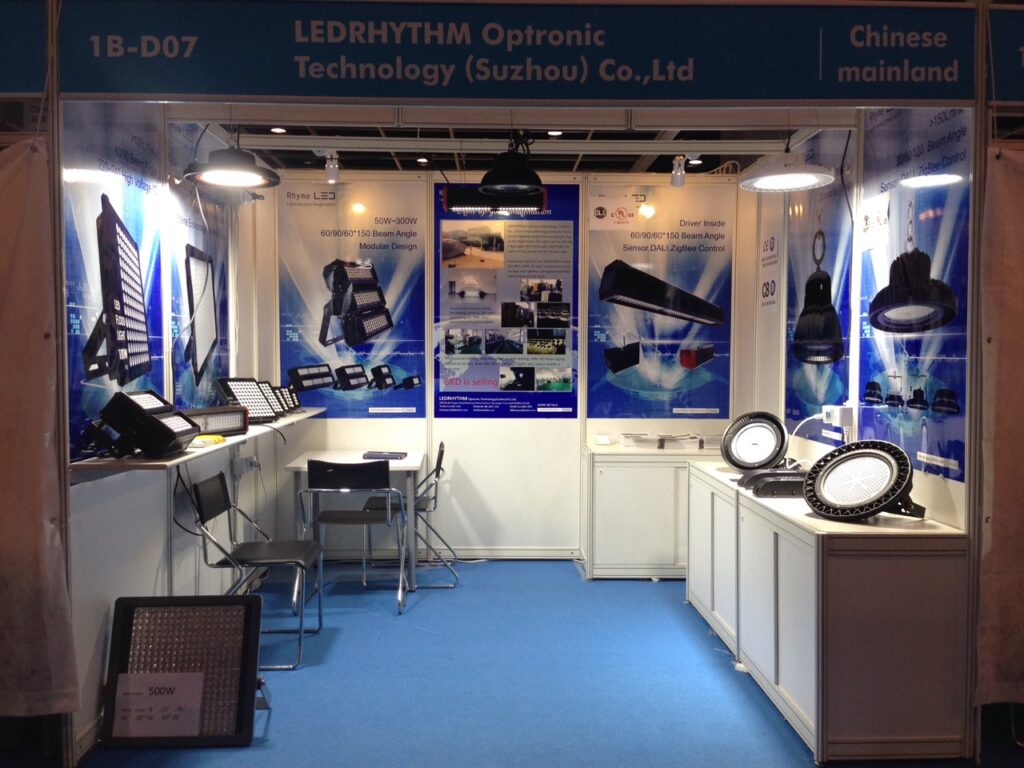دليل تصميم وحلول إضاءة ملاعب تنس الريشة الداخلية

1. مقدمة
غالبًا ما يتجاهل اللاعبون جودة الإضاءة في كرة الريشة الطائرة داخل الصالات المغلقة. ومع ذلك، فهي ضرورية لأداء اللاعبين وتجربة المشاهدين. تساعد الإضاءة الجيدة في الرؤية وتقلل من تكاليف الطاقة. كما أنها تضمن سلاسة اللعب وتقلل من الضغط على اللاعبين ومشغلي الأماكن.
يستكشف هذا الدليل تحديات ملاعب كرة الريشة الطائرة. ويغطي أفضل مواصفات الإضاءة. ويوضح أيضاً كيف حلول LEDrhythm يمكن أن يحسن بيئة المحكمة. إذا كنت تقوم ببناء ملعب تنس الريشة الطائرة أو إصلاح القديم، يضمن لك هذا الحل تجربة لعب رائعة.
2. ما هي مشكلة إضاءة قاعة الريشة في الأماكن المغلقة؟
غالبًا ما تعاني صالات كرة الريشة في الأماكن المغلقة من مشاكل في الإضاءة. يمكن أن تؤثر هذه المشاكل بشكل كبير على جودة اللعبة وتجربة المستخدم. دعونا نستكشف المشاكل الشائعة.
2.1 ضعف جودة الإضاءة
ما يقرب من 60% من ملاعب كرة الريشة الداخلية تعاني من إضاءة غير كافية. غالبًا ما تكون مستويات السطوع منخفضة للغاية، مما يجعل من الصعب على اللاعبين تتبع الريشة في الجو. بالنسبة للرياضة التي تعتمد على ردود الأفعال السريعة والدقة، فإن الإضاءة الضعيفة تمثل عائقاً كبيراً.
2.2 مستويات لوكس منخفضة
توفر العديد من الملاعب الداخلية مستويات إضاءة تتراوح بين 200 و300 لوكس. وهذا أقل بكثير من الاتحاد العالمي للريشة الطائرة اقتراح 500-750 لوكس. ويؤدي ذلك إلى صعوبات في الحكم على سرعة الريشة ومسارها، مما يؤدي إلى مزيد من الأخطاء أثناء اللعب.
2.3 العمر الافتراضي القصير للمصباح وارتفاع تكاليف الاستبدال
مصابيح تقليدية في ملاعب تنس الريشة الطائرة المغلقة تدوم عادةً من 10,000 إلى 20,000 ساعة. وهذا يعني الاستبدال المتكرر، مما يؤدي في كثير من الأحيان إلى تكاليف تشغيلية كبيرة ووقت تعطل كبير. بالنسبة لمكان به 12 ملعبًا، يمكن أن تصل تكلفة استبدال المصابيح إلى $2,000 لكل مصباح.
2.4 الوهج وإجهاد العين
يمثل الوهج مشكلة خطيرة في العديد من الأماكن. إذا كان تصنيف الوهج (GR) أكثر من 30، يمكن أن يسبب إجهاد العين. وهذا يقلل من أداء اللاعب ويزيد من خطر الإصابة. تحتوي العديد من أنظمة الإضاءة القديمة على معدل إضاءة يتراوح بين 31-35، وهو معدل مرتفع للغاية بالنسبة للأداء الأمثل.
2.5 الاستهلاك العالي للطاقة
تستخدم حلول الإضاءة التقليدية الكثير من الطاقة. ويمكن أن تستهلك من 50 إلى 60 كيلوواط/ساعة في الساعة لمساحة 1000 متر مربع ملعب تنس الريشة الطائرة. ويصل هذا إلى تكلفة إضاءة سنوية تتراوح ما بين 1 تيرابايت إلى 1 تيرابايت إلى 1 تيرابايت إلى 60 تيرابايت، وهي تكلفة كبيرة بالنسبة لأصحاب الأماكن.
3. ما مقدار المساحة التي تحتاجها لتنس الريشة؟
عند التخطيط لـ ملعب تنس الريشة الطائرة الداخليفإن المساحة هي العامل الرئيسي. لذلك, كم المساحة التي تحتاجها لتنس الريشة الطائرة? وفقاً لـ مواصفات ملعب الريشة الطائرة، يجب أن يكون طول الملعب 13.4 متر، وعرضه 6.1 متر للزوجي. بالنسبة للفردي، يقل العرض إلى 5.18 متر.
تؤثر متطلبات المساحة هذه أيضًا على إضاءة ملعب كرة الريشة الإعداد. لتوفير إضاءة مناسبة دون إلقاء ظلال أو وهج، من الضروري وضع مصابيح LED لملاعب كرة الريشة الطائرة على ارتفاعات وزوايا مثالية. للملاعب الاحترافية, أضواء الريشة الطائرة يجب أن تغطي منطقة اللعب بالكامل بشكل موحد.
3.1 أبعاد ملعب كرة الريشة القياسية
إن حجم الملعب القياسي لتنس الريشة الطائرة للفردي بطول 44 قدم (13.4 متر) وعرض 17 قدم (5.18 متر). بالنسبة للزوجي، يبلغ عرض الملعب 20 قدماً (6.1 متر). الملعب ارتفاع ملعب كرة الريشة بالقدم يجب أن لا يقل طولها عن 20 قدماً (6.1 متر) لاستيعاب التحليق العالي للريشة.
3.2 ما هو حجم ملعب كرة الريشة؟
وإجمالًا، فإن ملعب تنس الريشة الريشة بالحجم القياسي تمتد على مساحة 81 مترًا مربعًا تقريبًا، مما يوفر مساحة كافية للاعبين للتحرك بحرية ولإتاحة إضاءة ملعب كرة الريشة ليتم تثبيتها دون إعاقة اللعب.
4. ما هو الحجم القياسي لملعب كرة الريشة؟
معرفة أبعاد ملعب كرة الريشة الطائرة أمر بالغ الأهمية، خاصةً لضمان الوصول إلى إضاءة ملعب كرة الريشة. وفقًا ل الاتحاد العالمي للريشة الطائرة (BWF)فإن قياس ملعب الريشة يجب أن تمتثل لما يلي:
-
الطول: 13.4 متر
-
العرض: 6.1 متر (زوجي) أو 5.18 متر (فردي)
-
حجم ملعب الريشة الطائرة وارتفاع الشبكة: يبلغ الارتفاع الصافي عند المركز 1.55 متر.
تضمن هذه الأبعاد التوازن الصحيح للمساحة المناسبة للعب وتضمن أن إعداد الإضاءة يمكن أن يحقق التوحيد المطلوب في السطوع.
4.1 تصميم ملعب كرة الريشة
الفعالية تصميم ملعب تنس الريشة يجب النظر في وضع الأضواء، ونوع المصابيح، وكيف أن المحكمة اللون سوف تتفاعل مع الإضاءة. على سبيل المثال، يجب أن تكون الجدران والأرضيات ذات تشطيبات غير عاكسة لتقليل الوهج الناتج عن الإضاءة.
4.2 إضاءة كرة الريشة LED للأداء
مصابيح LED لملاعب كرة الريشة الطائرة توفر إضاءة فائقة وأداءً يدوم طويلاً وتوفيراً في الطاقة مقارنةً بالمصابيح التقليدية. باستخدام حلول LEDrhythm للريشة الريشة LED، يمكن أن يصل متوسط الإضاءة إلى 850-1000 لوكس، مع الحد الأدنى من الوهج وكفاءة عالية في استهلاك الطاقة.
5. حل ليد ريثم: إضاءة رياضية عالية الجودة لملاعب تنس الريشة الداخلية
5.1 إضاءة ساطعة ومتساوية
يوفر إيقاع LEDrhythm أداءً عالياً مصابيح LED لملاعب كرة الريشة الطائرة مصممة لتوفير متوسط إضاءة يتراوح بين 800 و1000 لوكس. وتبلغ التوحيد من الإضاءة تتجاوز 0.7، مما يضمن سطوعًا متناسقًا عبر الملعب بأكمله. يقلل ذلك من الإجهاد على أعين اللاعبين ويساعدهم على تتبع الريشة بشكل أفضل أثناء المباريات والحصص التدريبية.
5.2 تقنية LED طويلة الأمد
إيقاع LEDrhythm's إضاءة ملعب كرة الريشة توفر الأنظمة متانة فائقة، حيث يتجاوز عمرها الافتراضي 50,000 ساعة. ويُترجم ذلك إلى انخفاض تكاليف الصيانة وتقليل الأعطال، مما يسمح للأماكن بالاستمرار في العمل دون الحاجة إلى التوقف المتكرر عن العمل لاستبدالها.
5.3 تقنية مقاومة التوهج
يضمن لك التصميم المضاد للوهج تصنيف الوهج (GR) أقل من 30، مما يقلل من خطر الانزعاج البصري للاعبين. يسمح ذلك باللعب لفترات طويلة دون إجهاد العين، مما يعزز تركيز اللاعب وأدائه.
5.4 موفرة للطاقة وصديقة للبيئة
استهلاك الطاقة مصابيح الريشة الطائرة LED من LEDrhythm تنخفض بشكل كبير مقارنةً بالأنظمة التقليدية. تعمل حلول الإضاءة التي نقدّمها على خفض استخدام الطاقة بنسبة تصل إلى 601 تيرابايت 3 تيرابايت. وهذا يساعد على خفض التكاليف ويجعل منشأتك أكثر مراعاة للبيئة.
6. معالجة نقاط الألم
تعالج حلول LED من LEDrhythm مباشرةً المشاكل الشائعة التي تعاني منها صالات كرة الريشة الداخلية:
-
زيادة السطوع: توفر حلولنا أكثر من ضعف سطوع أنظمة الإضاءة العادية. فهي توفر أكثر من 800 لوكس في المتوسط.
-
تقليل الوهج: مع وجود GR أقل من 30، فإن أنظمتنا تقلل بشكل كبير من خطر إجهاد العين وتشتيت الانتباه.
-
عمر أطول: مصابيح LED تدوم حتى 50,000 ساعة، مما يقلل من تكاليف الاستبدال المتكررة.
-
كفاءة الطاقة: تساعد أنظمتنا لمصابيح LED في تقليل استهلاك الطاقة بنسبة تصل إلى 601 تيرابايت 3 تيرابايت، مما يجعلها مستدامة بيئياً ومالياً.
7 、 دراسة حالة - ملعب كرة الريشة في مركز هوبي الأوليمبي في هوبي
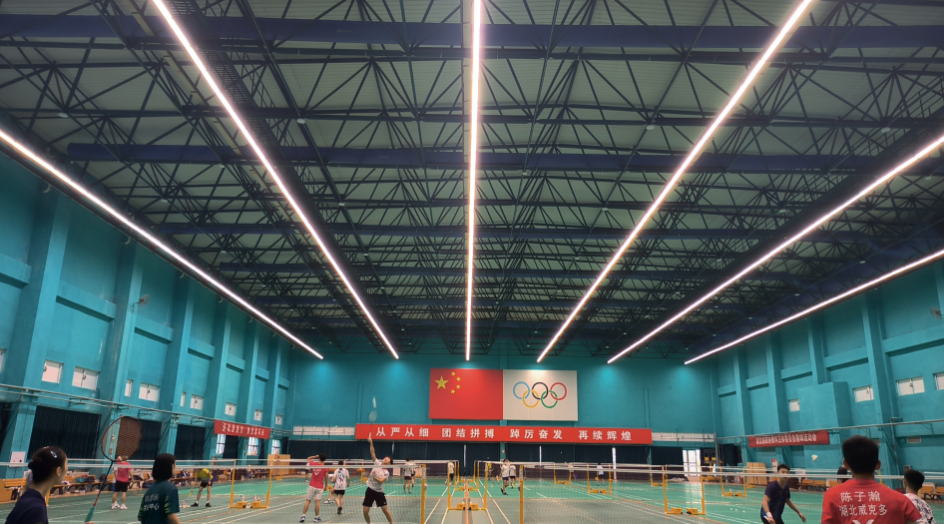
إضاءة ملعب مركز هوبي الأوليمبي لتنس الريشة الطائرة
خذ ملعب تنس الريشة الطائرة في مركز هوبي الأولمبي كمثال. قبل استخدام إضاءة LEDrhythm، كانت إضاءة المكان ضعيفة حيث كانت الإضاءة في المركز 350 لوكس فقط. وكان معدل التوهج مرتفعًا عند 35، وكان هناك حاجة إلى استبدال 201 تيرابايت في الساعة من المصابيح سنويًا. وكان استهلاك الطاقة مرتفعًا أيضًا حيث بلغ 55 كيلو وات/ساعة في الساعة.
لقد صنعنا نظام إضاءة خاص لها. استخدمنا مصابيح LED عالية السطوع وعالية التوحيد. قمنا بتخطيط التصميم والتركيب بعناية.
تم تركيب الأضواء في المكان. زاد السطوع إلى 850 لوكس. كانت الإضاءة أكثر تساويًا عند 0.75. انخفض الوهج إلى 30.
ذكر اللاعبون أنهم يستطيعون رؤية الريشة بوضوح أثناء المباريات. لم يتعرضوا لإجهاد العين أو الوهج. ساعدهم ذلك على اللعب بشكل أفضل والاستمتاع بالتجربة أكثر.
استخدم المكان طاقة أقل، مما أدى إلى توفير $30,000 في السنة من تكاليف الإضاءة. انخفض استخدام الطاقة في الساعة إلى 25 كيلو وات/ساعة. بالإضافة إلى ذلك، فإن المتانة الممتدة للمصابيح تقلل بشكل كبير من نفقات الاستبدال والصيانة.
الجديد aددإد يمكن لخاصية التعتيم تحسين نظام الإضاءة في ملعب مركز هوبي الأولمبي للريشة الطائرة. هذا التحسين يمكن أن يفيد اللاعبين والمتفرجين على حد سواء.
تسمح ميزة التعتيم بتحكم أفضل في مستويات الإضاءة. يمكن أن تخلق بيئة أكثر راحة أثناء الألعاب والفعاليات. ستسمح هذه الميزة بتعديل مستويات السطوع وفقًا لاحتياجات محددة، مما يخلق بيئة أكثر تخصيصًا وقابلية للتكيف مع الأحداث والأنشطة المختلفة.
إضاءة ملعب الريشة الطائرة في مركز هوبي الأوليمبي: أبولو السلسلة، انقر للحصول على مزيد من التفاصيل!
8. حجم ملعب الريشة وتخطيط الإنارة
عند تصميم ملعب تنس الريشة الريشة في الأماكن المغلقة، فإن حجم ملعب الريشة وتخطيط الإضاءة أمران حاسمان. إن حجم ملعب المكوك بالقدم يتبع لوائح صارمة لضمان العدالة في اللعبة. وبالمثل، فإن وضع إضاءة ملعب كرة الريشة يجب أن تتماشى مع هذه الأبعاد لتجنب الظلال غير المتساوية أو الوهج.
8.1 أفضل الممارسات لإضاءة ملاعب كرة الريشة بتقنية LED
لتحقيق أقصى قدر من الأداء وتقليل التكاليف، من الضروري اتباع أفضل الممارسات لتصميم الإضاءة:
-
ضمان توزيع الضوء بشكل متساوٍ مع نسبة تجانس أعلى من 0.7.
-
التثبيت أضواء الريشة الطائرة LED على ارتفاعات مثالية لتغطية الملعب بأكمله.
-
استخدم تصميمات مضادة للوهج لتحسين راحة اللاعب.
8.2 لون ملعب المكوك وأثره على الإضاءة
إن لون ملعب تنس الريشة يمكن أن تؤثر على أداء الإضاءة. يمكن أن تتسبب الأسطح الفاتحة أو العاكسة في حدوث توهج، بينما تمتص الألوان الداكنة الضوء. اختيار اللون المناسب لون المحكمة المكوكية يساعد في الحفاظ على مستويات السطوع المناسبة ويقلل من إجهاد العين للاعبين.
9. مجموعة حلول الإضاءة الداخلية لتنس الريشة من ليد ريثم
9.1 السلسلة الماسية
إن الماس السلسلة توفر كفاءة عالية, مضاد للوهج أنظمة الإضاءة لملاعب كرة الريشة الاحترافية الداخلية. تُعد هذه السلسلة مثالية للأماكن الكبيرة بفضل سطوعها الفائق وتوحيدها.
9.2 سلسلة الزهرة 9.2
إن سلسلة فينوس يركز على الملاعب الصغيرة ومتوسطة الحجم، حيث يوفر إضاءة ثابتة بتكلفة أقل. تم تصميم هذه المجموعة للأماكن التي تتطلب إضاءة عالية الجودة ولكنها تحتاج إلى إدارة النفقات التشغيلية.
9.3 سلسلة المحيطات
إن سلسلة المحيطات توفر حلول إضاءة متينة وموفرة للطاقة للملاعب ذات الازدحام الشديد. تم تصميم هذه التركيبات لتقدم أداءً يدوم طويلاً، مع الحد الأدنى من الصيانة المطلوبة.
10、الخاتمة
يناسب حل إضاءة LEDrhythm ملاعب كرة الريشة الداخلية. وهو يهدف إلى حل مشاكل الإضاءة الشائعة بجودته العالية وأدائه العالي.
نحن نستخدم تكنولوجيا متطورة وتخطيطات علمية لتحسين المحيط البصري للرياضيين أثناء الأنشطة الرياضية. وهذا يجعل الألعاب أكثر متعة وتنافسية.
بالنسبة لمشغلي الأماكن، نساعد في خفض التكاليف وتعزيز الكفاءة. وهذا يؤدي في النهاية إلى زيادة الفوائد الاقتصادية.
نحن نساعد مديري الملاعب في خفض النفقات وتعزيز الإنتاجية وزيادة المكاسب المالية. اختر LEDrhythm وأضئ ملعب كرة الريشة الداخلي الخاص بك بالطريقة الصحيحة!
|
المعايير |
الإضاءة التقليدية |
إضاءة LED |
|
متوسط الإضاءة (لوكس) |
200-350 لوكس |
800-1000 لوكس |
|
انتظام الضوء |
منخفضة (غالبًا أقل من 0.5) |
مرتفع (يتجاوز 0.7) |
|
تصنيف الوهج (GR) |
مرتفع (GR 31-35، يسبب عدم ارتياح بصري) |
منخفضة (GR < 30، مما يقلل من إجهاد العين) |
|
العمر الافتراضي للمصباح |
10,000 إلى 20,000 ساعة |
أكثر من 50,000 ساعة |
|
استهلاك الطاقة |
50-60 كيلوواط/ساعة في الساعة لملعب مساحته 1,000 متر مربع |
20-25 كيلوواط/ساعة في الساعة |
|
تكاليف الصيانة |
مرتفع (يلزم الاستبدال المتكرر) |
منخفض (عمر أطول يقلل من الصيانة) |
|
تكلفة التركيب |
تكلفة أولية أقل، وتكاليف أعلى على المدى الطويل |
تكلفة أولية أعلى، وتكاليف أقل على المدى الطويل |
|
الأثر البيئي |
ارتفاع استخدام الطاقة والهدر |
استخدام أقل للطاقة وصديق للبيئة |
الجدول: مقارنة بين الإضاءة التقليدية مقابل إضاءة LED لملاعب كرة الريشة الداخلية
المزيد من المنتجات ذات الصلة بـ iملعب تنس الريشة الطائرة:
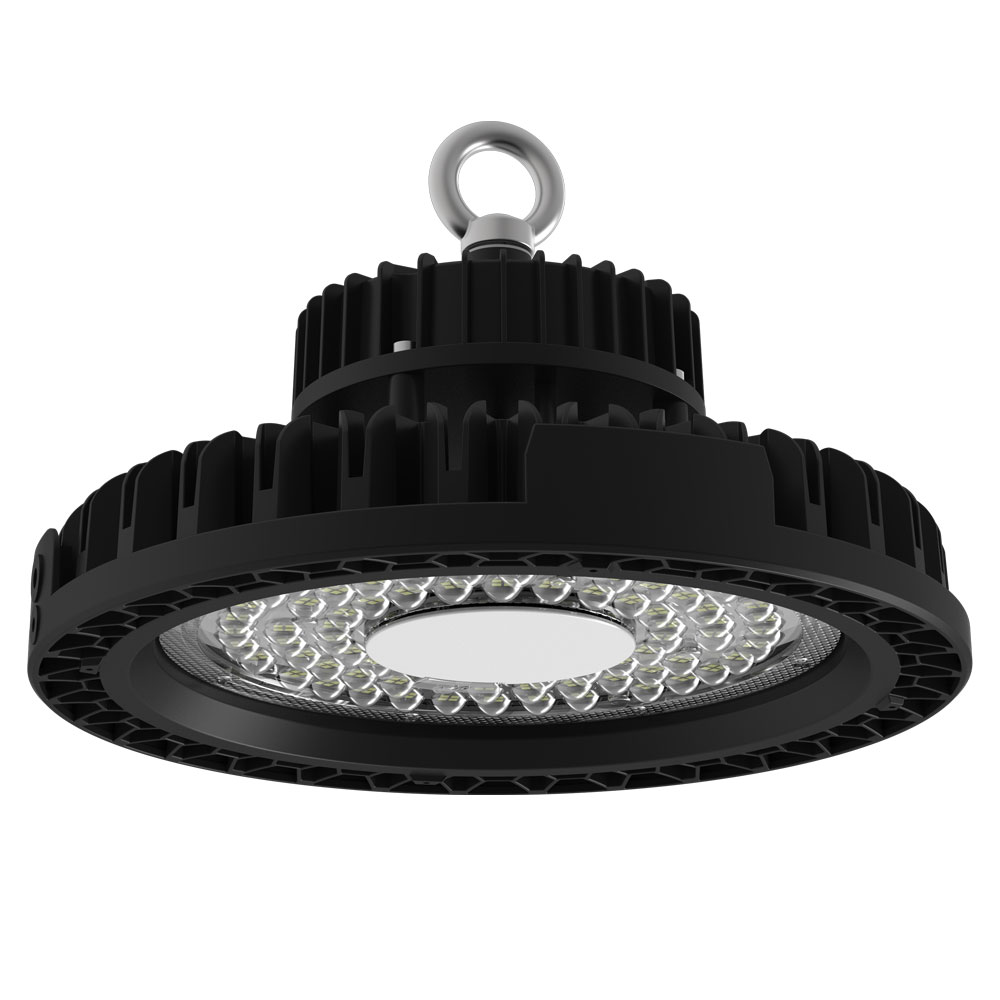

يرجى الضغط هنا لمعرفة المزيد الحلول إيقاع الصمام المقدمة
إذا كان لديك أي أسئلة أخرى، يرجى انقر هنا لإرسال أسئلتك. سنقوم بالرد عليك في غضون يومي عمل.

